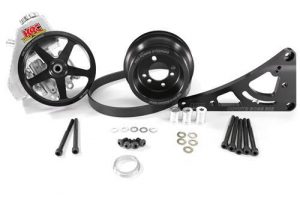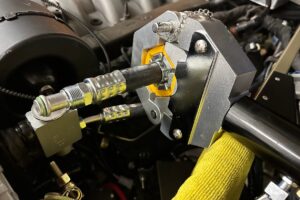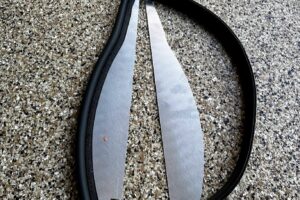
I found this on ffcars.com in their FAQ, it’s pretty popular and helps people (like me) who are thinking, planning, scheming on how to build this car… I’ve added some commentary to match my thoughts on my plans… I hope to keep this as a living post, as I get updates and ideas, I’ll circle back to this one!
Build Check Sheet (in 58-130’ish steps)
[thanks mcedward!]
- Plan car – I’ll be doing the 25th Anniversary MKIV complete kit
- Hint: “Right up there at the top, between #1 and #2 should be something about going to your local DMV (or whatever your state calls it) and getting printed information on what is required to title/register the car. CA DMV process here.
- If you get actual copies from the state’s books you can refer to it during the build and make sure everything’s right. You can also take it to the DMV and the inspection so you know what they’re doing is correct (some of these people don’t know, don’t care, or are just plain wrong).”
- Don’t be shy, ask some friends who have done this before!
- Buy donor parts – or in my case, figure out the new parts going into the build!
- Buy kit (ouch!) https://cobradreams.com/parts-n-pieces/
- Prep donor parts – or, prep the new stuff (ongoing as parts arrive)
Hint: save all bolts and nuts (some may be re-used on build)
Inventory all parts and reconcile to shipping bill of lading.
- Remove body – https://cobradreams.com/2020/02/25/the-body-has-been-removed-and-ready-for-work/put on buck
- Make cardboard buck shapes first for better fit
- Optional: “For those undercoating their cars with truck bed liner products here is a good tip… Complete the under-liner first prior to painting the body. I did it the opposite way and taped off all openings real nice like the shiny part would not be so shiny. Turns out the underside of these bodies are real porous and the bed liner product soaks in like a sponge. Any pinholes or thin spots (mine were around the wheel openings and headlight openings) bled up through the shiny side. If you were to apply the underside first the body prep to the top layer would cover the black. My fix was with a small detail spray gun and it was a pain in the butt!” For more undercoating discussion see “Anybody Undercoat Body?”
- Get body painted before Step 50
- As a paint-shop post-mortem, I made the mistake of not pre fitting the rollbar and windshield side-post bezels I got from Finishline. The painter and I just fitted the bare windshield and bare roll bar. I am now having some problems with both. Even as thin as the windshield pieces are, they throw off the windshield and leave a gap. If we had tested the bezels, we would have seen that the rear hole, which had been pre-cut by FFR, was bigger than the bezel and my painter could have easily filled in part of the hole. Can’t do that now. Please learn from my mistakes.
- Remove sheet metal
- Before step 7, I would add marking all of the alum panels (with masking tape for easy removal – before removal with position and orientation in reference to adjacent panels
- wipe off black letters with rubbing alcohol (or Acetone retain your position marks if desired
- Install F-Panel (optional here, maybe Step 20)
- Hint: Optional consider welding options on the frame prior to sheet metal addition. Weld-on Options
- Install IFS
- Hint: with FFR LCA, the coil-over shock mounts “threads up”
- Install front brakes
- Install Steering rack
- Hint: The ears on the frame need to be widened, use threaded rod, nuts, washers to expand
- Install Steering column, trial fit
- Hint: The 29″ DD tube in kit replaces the Mustang one…no welding w/ Mark II kit
- Install Pedal box
- Hint: “I didn’t cut the brake pedal or change the pivot point – I installed power brakes. I did find that my foot brushed the right side of the brake pedal on the way to the accelerator. I put a 1″ dogleg in both the brake pedal and the clutch pedal. I saw some posts where people used a (persuader) to do this – good luck on the brake pedal – it is very tough (as it should be). I went to a shop that has a little hydraulic press and both pedals were done in 5 minutes.”
- Trial fit MC
- Hint: The MC tilts a little, this is ok
- Hint: Run over to the NAPA store. Order part number 10-1896 (1984 Jeep Cherokee). The current price is $28.19 + $13 core for a total of $41.19. The one I purchased this past week was the aluminum one and it is very light weight.
- Install rear end (first on IRS, without axles attached)
- Install rear suspension (first on solid rear)
- Hint: on IRS, the ears on the frame need to be widened, use threaded rod, nuts, washers to expand
- Install rear brakes
- Trial fit wheels (rims with tires)
- Test wheels all rotate without interference
- Install Alum Panels
- Install Driver’s Side (DS) alum floor panel (Ron Story)
Hint: Because it is a longer reach, get a small box of 3 mm long 1/8″ diameter alum rivets for attaching floor panels to the big round 4″ frame tubes
- Install DS Foot Box (FB) floor
Hint: Optional, use 2-sided 3M thin tape (really solid adhesive) 3/4″ wide, very thin, instead of silicone, eliminates Cleco temp rivets
Hint: Optional, Apply a bead of silicone to aluminum panels before riveting to frame. Will prevent water from leaking in and also helps to prevent squeaks and rattles.
- Install inside Firewall above tranny, cockpit side
- Install firewall, engine side
- Install DS FB vertical, engine side
- Install DS FB outer vertical
- Install DS MC panel
Hint: leave loose the DS FB top 2 pieces as per manual for work on clutch quadrant, MC rod, throttle cable, etc.
- Install MC final fit
- Install brake lines front & rear
- Re-install steering column – final fit
- Install F-Panels
- Install Passenger Side (PS) Panels, repeat Steps 16.0-16.6
- Install gas tank
- Hint: to prevent frame from attacking tank, use little plastic blocks in kit under frame 1×1 downers that go against tank. Install these guys before the tank
- Install engine-tranny combo without shifter
- Hint: The trans. shift and cover may not be a perfect line up, make sure engine mounts are in right holes all the way down and also tranny mount is all the way in the right slot. May need to adjust opening for shifter per John Hudson Shifter Hole Fix (my Mark II was perfect)
- Hint: “We installed our 4 into 4’s right after installing the engine.”
- Install Exhaust System
- Attach j-pipes to side pipes
- Attach pipe assembly to engine header
- Adjust J-Pipes to fit between engine headers & sidepipes
- Optional Ceramic coat J-pipes
- Install Fuel Pump (carb.), Filter & Gas lines
- Hint: Fuel pump is in gas tank on EFI cars
- Hint: Optional Nylon Fuel lines ease this task considerably
- Install shifter
- Install shortened driveshaft
- Install Emergency Brake Handle & Cable
- Install rest of interior & trunk sheet metal (except under door panels that require body for best fit.)
- Hint: “I know a lot of people think that the aluminum under the doors cant be installed before the body has been put on but I did it twice. When you put the body on for test fitting test fit and trim these pieces and mark their location at this time. That way once the body is back off you can put them in, carpet and finish up the interior, it’s a lot easier with the body off. I found in both instances the aluminum was too tall and if it were not trimmed would hold the body up from sitting down as far as it should. Its real nice to be able to have the interior all finished up and drop the newly painted body on without having to do all your carpet
- Hint: Align IRS before trunk alum panels; easier to see and reach bolts & shims for adjustment.
- Install battery location without battery
- Install battery cable
- Install solenoid for starter
- Install wiring incl. EEC module
- Install gauges in dashboard
- Install & Connect Gauge Wiring
- Install battery final fit
- Install Radiator & Fan
- Install Cable for Throttle & Connect gas pedal
- Hint: “While driving around in primer and no interior all was fine but now with carpet and insulation in place the pedal will not depress all the way…I guess this is a warning more than a question for all those who do not want cruise control at WOT to take into consideration the carpet and insulation when installing items like this…”
- Install Hoses to Engine/Radiator
- Install fluids: water, oil, tranny fluid, rear end, and brake fluid, bleed brakes
- Testing
- Test Brakes
- Test Wiring
- Test shifter
- Test clutch
- Test steering
- Test lights
- Test Fan on radiator
- Test Throttle cable moves to WOT
- Test fire extinguisher
- Preliminary wheel alignment
- Block wheels front and rear (I reversed 43 and 44, probably better to chock the wheels before you start the engine)
- Test start engine
- make sure oil pressure is there
- make sure no fluids leak
- make sure fan works (manual override switch?)
- make sure clutch works
- make sure engine does not overheat
- test tranny/clutch with engine running
- If brakes are good, drive a few inches or feet.
- If done testing, then finish wiring, final fit.
- Install dashboard, final fit
- If done with clutch, gas pedal, brake pedal, install sheet metal top of DS Footbox.
- Install rest of sheet metal except under door panels
- Hint: Optional: “If you are planning on upholstering the interior of the trunk, and you are not planning on buying one of the pre cut carpet kits, I’ve got a tip for you. BEFORE you install the aluminum trunk floor pieces, take 5 minutes and make a template of them…complete with all the holes for roll bar and belt mounts. It’s five minutes that’ll save an hour or two of trying to make templates by cutting little bits of poster board around all the obstructions.”
- Optional, Use flat-head screws to install transmission cover, instead of rivets, just in case you need to remove cover later.
- Optional: rivet tranny cover in without adhesive so it can be removed easily by drilling out the rivets.
- Install carpet
- Optional, to protect from engine heat, install foil backed insulation on aluminum panels, before installing carpet.
- Install seats if low back (if highback wait until body on)
- Install tail lights in body
- Install body
- Hint: Make sure all your foam tape and rubber seals on your alum. are in place.
- Hint: Before final mounting of body it’s a good idea to trial fit body (before paint) and open up any cutouts if necessary, roll bar, exhaust, trial mount windscreen
- Install doors, trunk, & hood
- Install sheet metal under doors
- Install Body Accessories
- Install lights front & rear
- Install bumpers (or equal)
- Install Roll Bar(s)
- Install wipers
- Install Fire Extinguisher
- Test all safety equipment
- Take to State Inspection for registration
- Install plates
- Test drive
- Adjust Clutch cable, headlight angle, brakes, etc.
- Final alignment Front end, (and rear-end on IRS.)
Discover more from Cobra Dreams
Subscribe to get the latest posts sent to your email.







